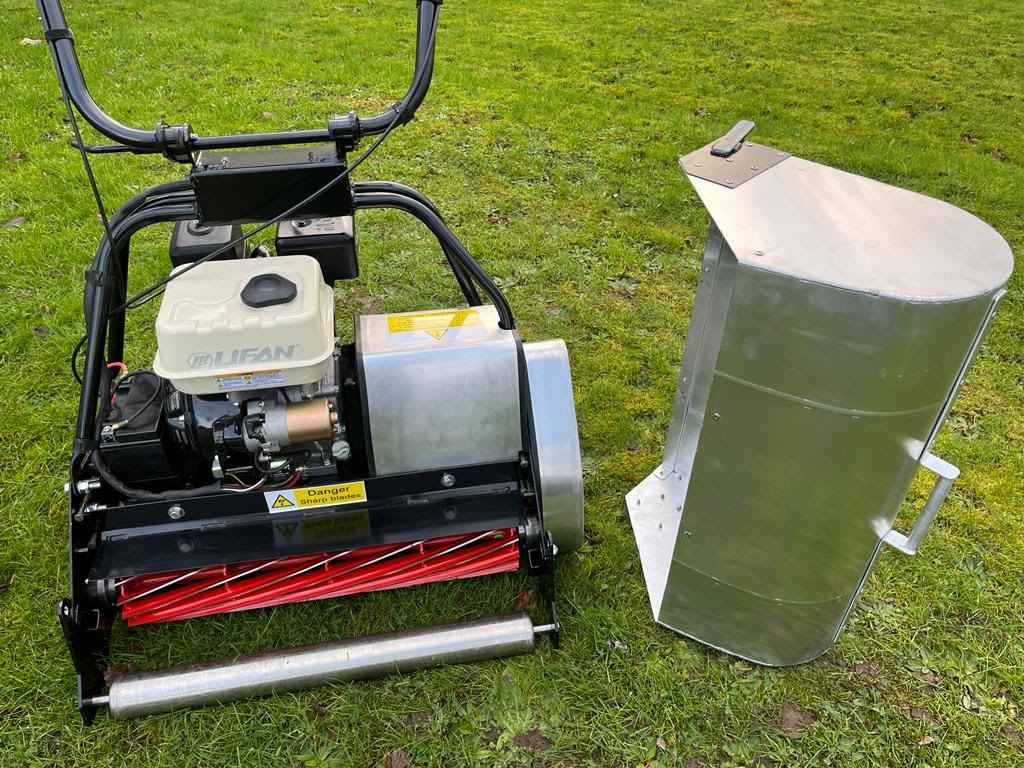Sustainable Turf Management
The concept of Sustainable Turf Management is to work with the natural soil biology to reduce the use of synthetic fertilisers, pesticides and fungicides.
Biological fertilisers help to produce a healthy and active root zone in which dead organic matter is broken down by bacteria into usable nutrition for the grass plants. This organic matter includes dead roots as well as a vast range of micro-organisms. Many outdated books and websites recommend the use of scarifiers to remove this organic matter. However, using organic-based fertilisers with bacterial input will reduce excess thatch by around 33% per year making scarification unnecessary.
Pesticides for the control of worms, leather jackets and chafer grubs have all been banned or are severely restricted by law. This has encouraged the development of alternative control methods that do not involve the use of damaging chemicals. These new methods rely on conditioning the soil so that the environment is no longer attractive to the pests. (Contact me for information on these products).
Mycorrhizal fungi play an important role in turf management and have a symbiotic relationship with the plant, providing moisture and nutrition to the grass plant in exchange for sugars which are derived from the grass plant’s photosynthesis. For this reason it is not desirable to kill them off by using fungicides.
Diseases. The main fungal diseases affecting croquet lawns are Red Thread, Fusarium and Dollar Spot. A handful of soil will contain millions of fungal spores which remain dormant until the right conditions occur such as warm and damp weather (Red Thread) or cool damp mornings (Fusarium). Red Thread is a fungus that sits on the leaf and extracts nutrition from the leaf causing it to turn brown and die. It can be controlled by spraying ferrous sulphate which will kill the fungus on the leaf by desiccation. With Fusarium and Dollar Spot, the fungus starts on the surface of the leaf but will break into the plant through damaged parts of the leaf or through stomata. Once in the plant, the fungus can only be controlled by fungicides but most of the damage has already been done. Most fungicides do not act as preventatives so there is no point in applying until the plant has already been attacked. Fungicides are expensive and can only be applied by certificated personnel. For these reasons, the best alternative is the use of Ferrous Sulphate which will kill any fungus on the leaf and therefore prevent the spread of the disease.
Aeration To help the natural biology of the root zone, it is a good idea to spike regularly using a Sarrel Spiker with thin tines. This will make pathways into the rootzone for moisture and oxygen which will encourage bacterial activity and healthy plants.
Biological fertilisers help to produce a healthy and active root zone in which dead organic matter is broken down by bacteria into usable nutrition for the grass plants. This organic matter includes dead roots as well as a vast range of micro-organisms. Many outdated books and websites recommend the use of scarifiers to remove this organic matter. However, using organic-based fertilisers with bacterial input will reduce excess thatch by around 33% per year making scarification unnecessary.
Pesticides for the control of worms, leather jackets and chafer grubs have all been banned or are severely restricted by law. This has encouraged the development of alternative control methods that do not involve the use of damaging chemicals. These new methods rely on conditioning the soil so that the environment is no longer attractive to the pests. (Contact me for information on these products).
Mycorrhizal fungi play an important role in turf management and have a symbiotic relationship with the plant, providing moisture and nutrition to the grass plant in exchange for sugars which are derived from the grass plant’s photosynthesis. For this reason it is not desirable to kill them off by using fungicides.
Diseases. The main fungal diseases affecting croquet lawns are Red Thread, Fusarium and Dollar Spot. A handful of soil will contain millions of fungal spores which remain dormant until the right conditions occur such as warm and damp weather (Red Thread) or cool damp mornings (Fusarium). Red Thread is a fungus that sits on the leaf and extracts nutrition from the leaf causing it to turn brown and die. It can be controlled by spraying ferrous sulphate which will kill the fungus on the leaf by desiccation. With Fusarium and Dollar Spot, the fungus starts on the surface of the leaf but will break into the plant through damaged parts of the leaf or through stomata. Once in the plant, the fungus can only be controlled by fungicides but most of the damage has already been done. Most fungicides do not act as preventatives so there is no point in applying until the plant has already been attacked. Fungicides are expensive and can only be applied by certificated personnel. For these reasons, the best alternative is the use of Ferrous Sulphate which will kill any fungus on the leaf and therefore prevent the spread of the disease.
Aeration To help the natural biology of the root zone, it is a good idea to spike regularly using a Sarrel Spiker with thin tines. This will make pathways into the rootzone for moisture and oxygen which will encourage bacterial activity and healthy plants.

